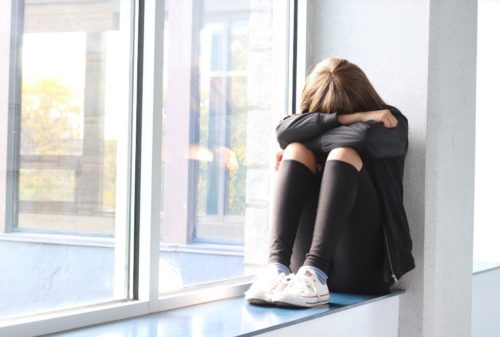Seasonal affective disorder is a sad reality for many students

By: Sydney McClaine
Photo Editor
When the leaves fall, so can serotonin levels.
Seasonal Affective Disorder or SAD is a condition that causes symptoms of depression to show during certain times of the year. Typically it starts in the gloom of fall and continues into winter.
SAD is more common than one might think considering the lack of awareness of it. But if you see a pattern of lower energy or happiness during certain times of the year, it may be something bigger.
Once you identify the problem it’s easier to find a solution. SAD is shown emotionally through mood changes, feelings of hopelessness, loss of interest or fatigue. Typically a clear sign of SAD is seeing grades go down in the fall semesters of school. Lack of motivation and hopeless thoughts make focusing more difficult than it needs to be, and students affected can fall behind.
Don’t let your grades suffer with you with some common solutions.
Since SAD of the wintertime is brought on by lack of sunlight, there are ways to help reverse the effect, like vitamin D supplements and light therapy. Light therapy is the use of a lightbox to mimic natural sunlight exposure. Sitting in front of a desktop lightbox for at least 20 minutes a day can help improve mood stability and happiness. You can find lightboxes on Amazon.com starting around $40. A price well worth the help it could bring.
The less common form of Seasonal Affective Disorder occurs in the summer. Unlike oversleeping in winter, summer SAD often comes with insomnia. Summer SAD may be caused by the lack of a routine- which can make time pass in strange ways and cause you to feel lost or out-of-whack, so sticking to a couple good habits daily can help.
Waking up and going to bed at consistent times is a start, and students can use their free time during the day to keep busy with self-improving healthy habits like exercise, art or journaling.
Both types of seasonal depression and depression in general can be eased through cognitive behavioral therapy, exercise or prescribed medications such as Selective Serotonin Reuptake Inhibitor or antidepressants. If you feel like Seasonal Affective Disorder could explain your experience, be sure to talk to your doctor about ways to cope. Dealing with any type of depression alone only makes it harder.
If you or someone you know needs help, call 518-271-3257 to reach a 24-hour hotline.
